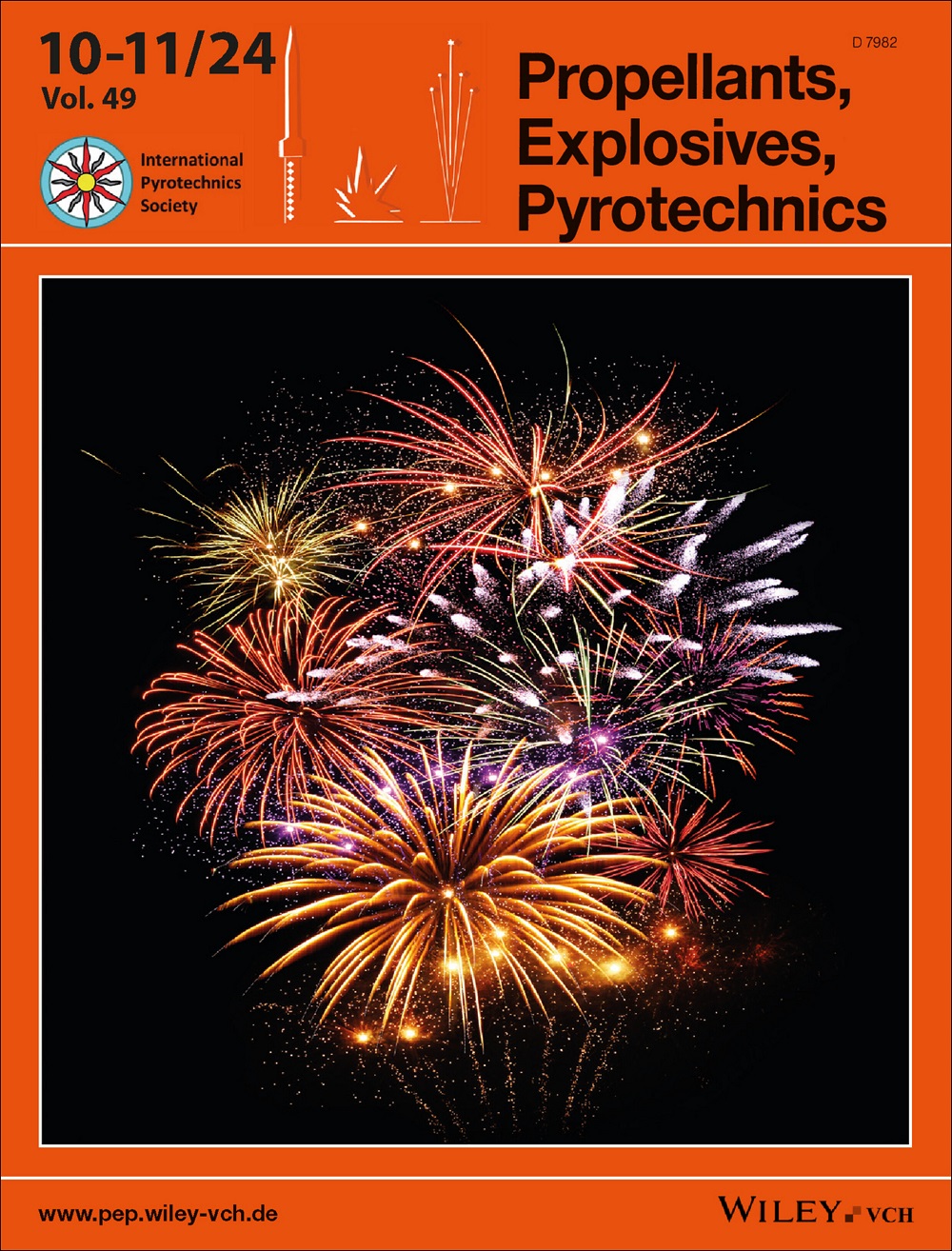利用差示扫描量热法研究 4-(二甲基硅基)丁基二茂铁接枝 HTPB 的固化动力学及催化剂的影响
IF 2
4区 工程技术
Q3 CHEMISTRY, APPLIED
引用次数: 0
摘要
使用差示扫描量热仪(DSC)研究了 4-(二甲基硅基)丁基二茂铁接枝羟基端聚丁二烯(HTPB)与异佛尔酮二异氰酸酯(IPDI)的固化动力学。此外,还研究了乙酰丙酮铁(III)(Fe(AA)3)和二月桂酸二丁基锡(DBTDL)对固化反应的催化作用。实验数据与基辛格模型和小泽模型进行了拟合,动力学参数用阿伦尼乌斯活化能(E)、前指数因子(A)和速率常数表示。对 Crane 模型进行了探讨,以确定固化反应的反应顺序。研究明确显示,与纯羟基端聚丁二烯(HTPB)体系相比,4-(二甲基硅基)丁基二茂铁接枝 HTPB 固化反应的活化能更高。不过,与 HTPB 相比,4-(二甲基硅基)丁基二茂铁接枝 HTPB 的固化反应速率更高,而且粘度增加数据与 DSC 动力学研究结果过于一致。此外,两种催化剂都能提高固化反应的速率,但 Fe(AA)3 的催化效果更好。本文章由计算机程序翻译,如有差异,请以英文原文为准。
Study of curing kinetics of 4‐ (dimethylsilyl) butyl ferrocene grafted HTPB and effect of catalysts by differential scanning calorimetry
The cure kinetics of 4‐ (dimethylsilyl) butyl ferrocene grafted hydroxyl terminated polybutadiene (HTPB) with Isophorone diisocyante (IPDI) was investigated using differential scanning calorimeter (DSC). Furthermore, the catalytic effect of Iron (III) acetylacetonate (Fe(AA)3 ) and Dibutyltin dilaurate (DBTDL) on the curing reaction was studied. The experimental data was fitted to Kissinger and Ozawa models, and the kinetic parameters were expressed as Arrhenius activation energy (E), pre‐exponential factor (A) and rate constants. The Crane model was explored to determine the reaction order of the curing reaction. The study categorically showed that the activation energy of the curing reaction with 4‐ (dimethylsilyl) butyl ferrocene grafted HTPB is higher as compared to the pure hydroxyl terminated polybutadiene (HTPB) based system. However, the rate of curing reaction is higher with 4‐ (dimethylsilyl) butyl ferrocene grafted HTPB as compared to HTPB, and the viscosity build‐up data is too aligned with the DSC kinetic study. In addition, both catalysts increased the rate of the curing reaction but Fe(AA)3 displayed a superior catalytic effect.
求助全文
通过发布文献求助,成功后即可免费获取论文全文。
去求助
来源期刊

Propellants, Explosives, Pyrotechnics
工程技术-工程:化工
CiteScore
4.20
自引率
16.70%
发文量
235
审稿时长
2.7 months
期刊介绍:
Propellants, Explosives, Pyrotechnics (PEP) is an international, peer-reviewed journal containing Full Papers, Short Communications, critical Reviews, as well as details of forthcoming meetings and book reviews concerned with the research, development and production in relation to propellants, explosives, and pyrotechnics for all applications. Being the official journal of the International Pyrotechnics Society, PEP is a vital medium and the state-of-the-art forum for the exchange of science and technology in energetic materials. PEP is published 12 times a year.
PEP is devoted to advancing the science, technology and engineering elements in the storage and manipulation of chemical energy, specifically in propellants, explosives and pyrotechnics. Articles should provide scientific context, articulate impact, and be generally applicable to the energetic materials and wider scientific community. PEP is not a defense journal and does not feature the weaponization of materials and related systems or include information that would aid in the development or utilization of improvised explosive systems, e.g., synthesis routes to terrorist explosives.
 求助内容:
求助内容: 应助结果提醒方式:
应助结果提醒方式:


